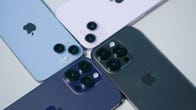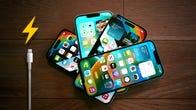In a year packed with numerous phone releases, the iPhone 14 lineup is curious. There is the iPhone 14 Pro and 14 Pro Max, which represent the pinnacle of Apple’s design, software and hardware. The iPhone 14 Pro is notably defined by an oval-shaped screen cut out for the True Depth camera, which replaces the notch, called the Dynamic Island. But then, there’s the iPhone 14 which seems like a repackaged iPhone 13 Pro without the stainless steel body or the third rear camera for telephoto pictures.
Apple discontinued the iPhone 13 Mini and replaced it with a bigger version of the 14 called the iPhone 14 Plus. Starting at $929, it’s meant to be a slightly “more affordable” way to get a large screen iPhone without crossing that $1,000 line. Taken in total, you have two high-end Pro iPhone models, a big-screen regular iPhone and the standard iPhone 14, which on the surface doesn’t seem like much of an upgrade from the iPhone 13. Apple’s lineup offers exciting new features while also seeming like a curious repeat of what came out last year.
Over the past three months, I used the iPhone 14 as my daily driver and the 14 Pro as my work phone. During that time, I ran in-depth battery tests, took numerous photos, used them to film CNET videos and tried out the new Emergency SOS via Satellite feature. Several of my CNET colleagues have also tested the cameras and compared them to the likes of the Google Pixel 7 Pro and Galaxy S22 Ultra. Here are my thoughts on the iPhone 14 family since my initial reviews back in September.
The iPhone 14’s battery doesn’t last as long as the iPhone 13
I’ve never met a single person who said, “Wow, I get too much battery life on my phone.” But I have definitely met many who have wanted more. A phone’s battery life lands at an interesting crossroads. You have the physical and chemical limits of modern lithium batteries as well as the clever software and processing optimizations that aim to make those batteries more efficient.
Apple doesn’t disclose the size of the batteries in its phones, but I wish it did because they’re relatively small compared to the batteries in Android phones. This isn’t about shaming Apple, but highlighting how much longevity the company ekes out of that battery through software optimizations and the efficiency of its A-series chips. In fact, last year’s iPhone 13 Pro Max lasted longer on a single charge than any other phone we tested.
The same can’t be said for this year. The iPhone 14 series gets good battery life but is definitely a step down from the iPhone 13 family, which gets longer battery life. The difference wasn’t drastic, and I imagine most people aren’t upgrading their phone every year and would never be the wiser.
At CNET, we run a few battery life tests and note how long the phones last in real life. The first test I ran with each phone was an endurance test. For 45 minutes, I played video games (some were online) as well as watched videos, scrolled through social media apps like TikTok and Instagram and made a video call over FaceTime. During that time, the iPhone 14’s battery decreased 10%, the 14 Plus dropped 5%, the 14 Pro lost 8% and the 14 Pro Max went down 7%.
I also fully charged each phone, then played a downloaded video looped in Airplane mode with the screen at 50% brightness. We’ve been running this test at CNET for years, and are in the process of phasing it out since software and chips now optimize for video playback. And most people watch streaming videos.
So why run this test? It allows us to compare Apple’s claims for video playback as well as with the outcome we got with the iPhone 13 series. The results are below.
Video playback test results
| Phone | Apple’s claim | Our results |
|---|---|---|
| iPhone 14 | 20 hours | 18 hours 45 minutes |
| iPhone 14 Pro | 23 hours | 20 hours |
| iPhone 14 Plus | 26 hours | 25 hours |
| iPhone 14 Pro Max | 29 hours | 26 hours 15 minutes |
These times also come up short when compared to the iPhone 13 series. The regular 13 lasted 21 hours and 51 minutes, the 13 Pro went 22 hours and 4 minutes and the 13 Pro Max scored an outstanding 31 hours and 19 minutes. I should also note that the 13 Mini lasted 18 hours and 19 minutes which is almost as long as the regular iPhone 14.
There has been a lot of chatter around the always-on display on the 14 Pro and 14 Pro Max and how it’s draining the battery. In our tests, the always-on display didn’t decrease the battery life in any significant way compared to having it off.
I charged both phones to 100% and left them on my desk with the always-on screen enabled. After 6 hours, the 14 Pro dropped 4% and the 14 Pro Max lost 2%. I ran the same scenario again, but this time turned off the always-on display. The results were essentially the same: the 14 Pro dropped 4% and the 14 Pro Max dropped 3%.
A lot of this will depend on your lock screen wallpaper, since the always-on display isn’t a black screen and instead shows a darkened version of your wallpaper photo. Luckily, iOS 16.2 has new always-on display settings that let you turn off the wallpaper and have just a black screen.
Emergency SOS via Satellite helped three people get rescued
Emergency SOS via Satellite and Car Crash Detection (or maybe it should be called “I’m on a roller coaster with an iPhone 14 detection”) might be two of the best features on the regular iPhone 14 and 14 Plus. But they are largely invisible tools that most people will hopefully never have to use.
Last month, I got to test out Emergency SOS via Satellite in a demonstration at Apple Park. I was impressed how easy it was to use and connect to a satellite, even in the rain. In fact, since then, the feature helped save a stranded snowmobiler in Alaska and two people whose car went off the side of a mountain.
Features like these are important, and I do think they help the iPhone 14 and 14 Plus stand out. But I don’t know if most people would prioritize them as something they must have on a phone. After a few months, it’s crystal clear that the standard iPhone 14 is aimed at people upgrading from an iPhone 11 or older and not from last year’s iPhone 13.
More Dynamic Island, please
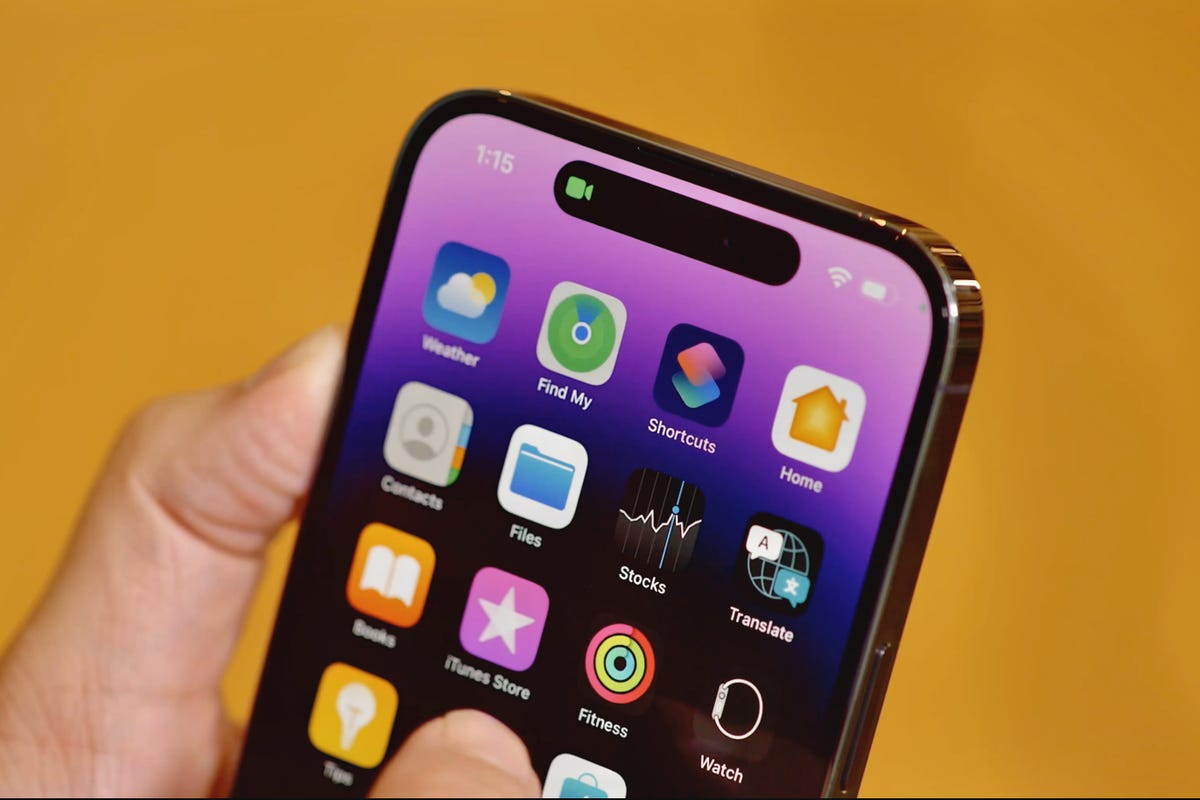
The Dynamic Island displays different tiny icons and animations. During a FaceTime call, a green camera icon shows on the left side.
Celso Bulgatti/CNET
The Dynamic Island works well. but it’s not without quirks. For example, the Dynamic Island sticks out further into the screen than the notch did, which is noticeable when watching some videos. I also wish that more non-Apple apps took advantage of the Dynamic Island.
Also, we haven’t had the full experience with the Dynamic Island that Apple intended. It’s part of a trinity of features that also includes the always-on display and Live Activities, which tracks the progress of certain activities like showing you the live score of a basketball team on your lock screen. The Dynamic Island will truly shine once apps fully adopt Live Activities which should be sooner than later now that iOS 16.2 is out.
There are scratches on my Ceramic Shield
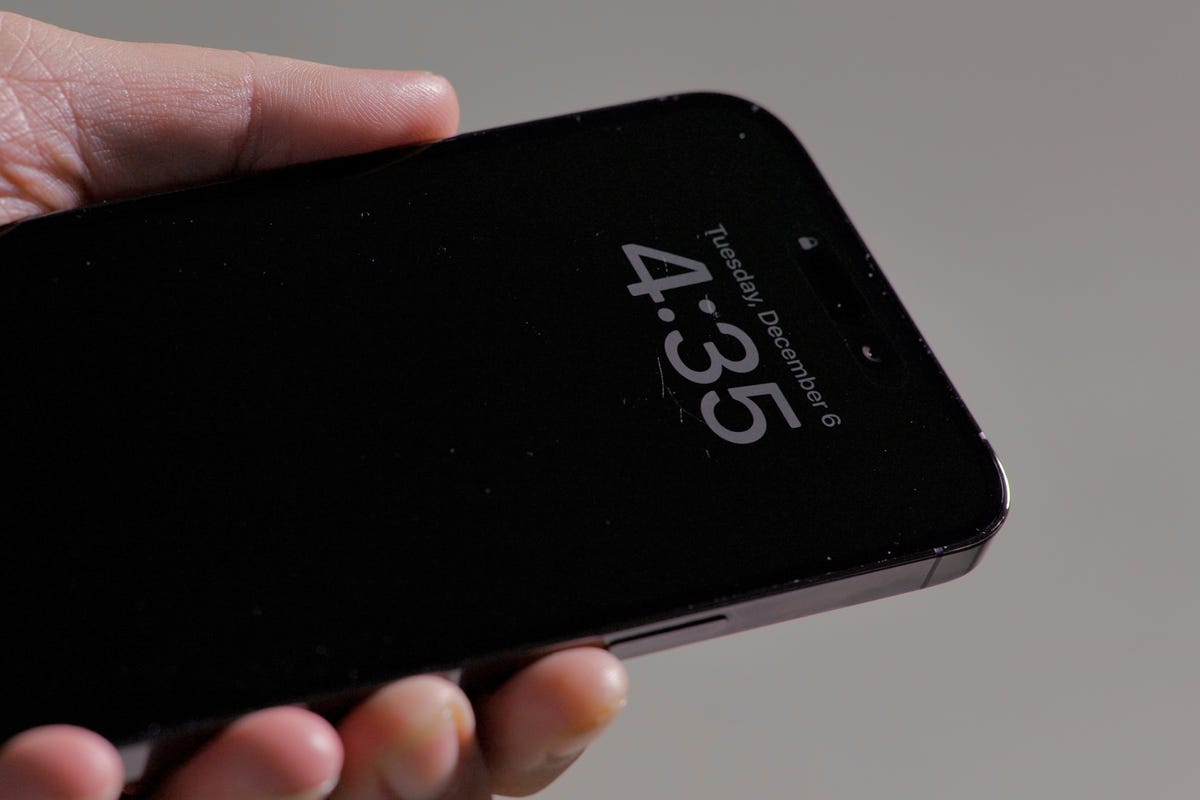
My iPhone 14 Pro Max already has a couple of tiny scratches.
Celso Bulgatti/CNET
All four models in the iPhone 14 series have Apple’s Ceramic Shield that covers the display. And all four of the phones I tested have scuffs or minor scratches on the front glass. I haven’t coddled the phones, but I haven’t been reckless with them either. After nearly three months, I’m shocked that all of these phones have scratches.
The iPhone 14 Pro’s cameras are excellent
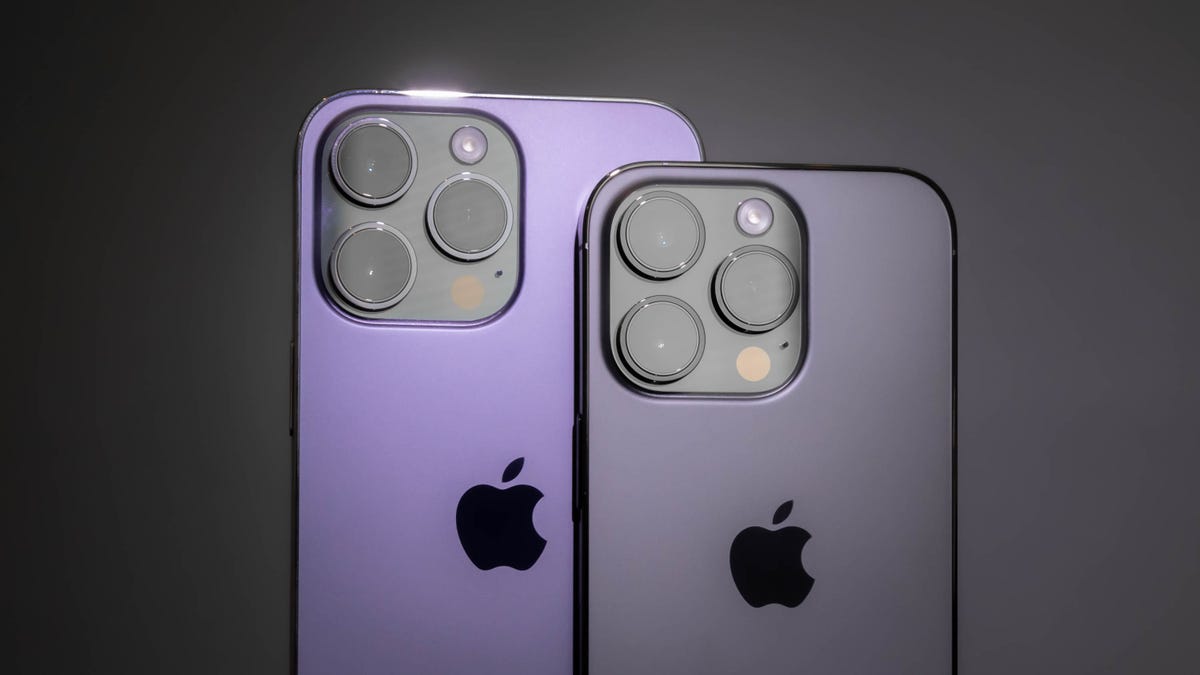
The main camera on the back of the iPhone 14 Pro and 14 Pro Max has a 48-megapixel sensor.
James Martin/CNET
The cameras on the iPhone 14 and 14 Plus are good. But the cameras on the iPhone 14 Pro’s and 14 Pro Max’s are great. Does that mean you can’t get quality photos on the 14 and 14 Plus? Absolutely not. But the ones I captured on the 14 Pro and 14 Pro Max and their 48-megapixel main camera are consistently great. Unfortunately, you have to shoot ProRaw photos to take full advantage of the iPhone 14 Pro’s full camera resolution, and these images have dramatically larger file sizes. I wish there was a built-in way to save and quickly convert the ProRaw photos into JPEGs.
One surprise for me has been Cinematic mode. It can record in 4K video at 24 frames per second or 30fps, and I’ve actually used it to film several CNET videos. The quality is good, and the overall experience with Cinematic mode is much better than it is on the iPhone 13. (Apple’s previous phone was limited to 1080p resolution at 30fps in that mode.) One trick I use to get more natural looking videos is to drop Cinematic mode’s aperture setting to f/8. I find this gives the background a more realistic out-of-focus look while keeping the subject in focus.
The iPhone 14 is more expensive even if the price didn’t go up
The baseline iPhone 14 is $829, which is the same as the iPhone 12 and 13 when they launched. But there is a difference. In 2020 and 2021, Apple also sold the iPhone 12 Mini and 13 Mini at $729. That essentially means the barrier to entry for a new iPhone is now more expensive, since the Mini isn’t part of the iPhone 14 lineup. To alleviate the price, Apple and US carriers have a ton of trade-in deals. Apple also still sells the iPhone 13 for $729, which can save you some money.
Read: Apple’s Next iPhone Might Not Get a Price Increase. Here’s Why
Then there’s the iPhone 14 Pro and 14 Pro Max, which are Apple’s most expensive models. They have the same starting prices as the 13 Pro and 13 Pro Max and as the 2018 iPhone XS and XS Max when they came out. Basically, the prices for Apple’s top-of-the-line models haven’t increased but they are hard to find. Apple scaled back production on the iPhone 14 Pro and 14 Pro Max because of COVID-19 lockdowns in China. Currently, the iPhone 14 Pro is showing shipping times of three-and-a-half weeks.
If you’re trying to get an iPhone 14 Pro as a gift for someone, your best bet is to try carriers and third-party retailers. However, Apple’s retail stores typically get more restock. And I wouldn’t dissuade you from ordering an iPhone 14 Pro. It’s an excellent phone and will still be one in three-and-a-half weeks.
Three months later, I am still impressed with the iPhone 14 and 14 Pro. The cameras are great, Emergency SOS provides more peace of mind, but the ceramic shield isn’t as durable as I expected. And the battery life isn’t as long as last year’s iPhone 13 lineup. But whether you’re upgrading from an older iPhone to an iPhone 14 or just want Apple’s absolute best, the iPhone 14 Pro, you should find something that fits your needs, budget and tastes.


